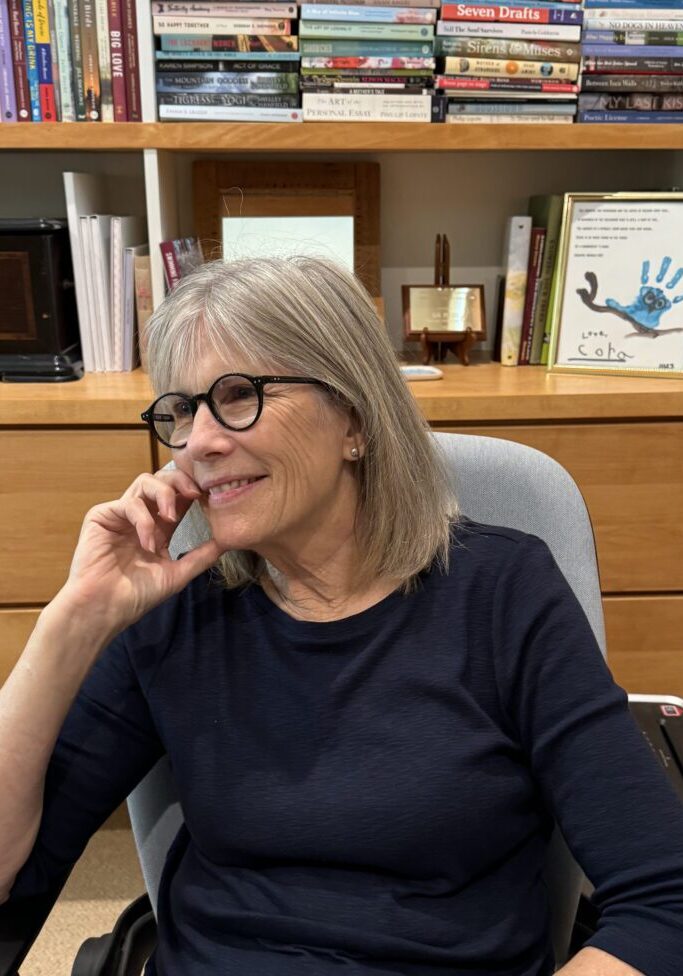Memoirist, Artist, and Author of Swimming for My Life
Kim Fairley is an artist and memoirist best known for her Title Nine swimming memoir, Swimming for My Life. Her work explores the emotional complexity of family, the long-term impact of competitive sports, and the healing power of personal storytelling. Through her writing, she uncovers how early athletic ambition, grief, and inherited family patterns shape a person’s identity.
Kim's writing has been featured in national and regional outlets, including:
HuffPost, Salon, MSN, The Good Men Project, and Ann Arbor Family, among others.

Autobiography: "This is my story, and I'm sticking to it."
Memoir: "This is my story. No, wait. This is my story!"
ABOUT
Kim is the author of three acclaimed nonfiction books:
-
Swimming for My Life (She Writes Press) – A powerful memoir about swimming, pressure, and self-discovery during the formative years of Title IX in women’s athletics.
-
Shooting Out the Lights (She Writes Press) – A gripping story about family, marriage, and emotional survival.
-
Boreal Ties: Photographs and Two Diaries of the 1901 Peary Relief Expedition (University of New Mexico Press) – A historical deep-dive into Arctic exploration through photography and firsthand accounts.
Her books are distributed by Simon & Schuster and available wherever books are sold.
Education & Professional Affiliations
-
BFA – University of Southern California
-
MFA in Mixed Media – University of Michigan
She is a member of several professional organizations, including:
The Nonfiction Authors Association (NFAA),
The National Association of Memoir Writers (NAMW),
The Authors Guild, and
Ann Arbor Area Writers.
QUESTIONS
Isn't it hard to write about your family knowing they may not share the same perspective?
I got lucky with my family. They gave me lots of material for memoir writing and fortunately, they all like to tell stories. Ever since I started writing, I've called them for their blessings. If the way I'm telling a family story isn't as strong as the moment they remember, they aren't afraid to tell me the writing needs work. That honest feedback is part of what helps to keep my memoirs grounded and authentic.
After all those years of making art, why did you become a writer?
All my life I've made art about my family. At art shows, I found myself telling personal stories rather than discussing the techniques behind my work. The logical next step was to become a memoirist -- a writer mining the past for emotional truths and generational patterns. Memoir writing became the extension of my visual work.

How does your past as a swimmer influence your writing?
My experience as a competitive swimmer during the early years of Title IX, has deeply influenced my writing process. In swimming it wasn't just about winning individual meets--it was about showing up every day, pushing through setbacks, and working toward Nationals. That kind of discipline trained me to stay consistent with my creative work. Whether in the pool or on the page, resilience and persistence matter most. That mindset helped shape my Title IX swimming memoir, Swimming for My Life.
Why do you write memoirs and not fiction? Why not make up the story?
To me, memoir is storytelling with muscle. We glance back at where we've been and attempt to answer the tough emotional questions. Writing true stories can be painful, but it's also transformative. We see repeating patterns in our lives, echoes from generation to generation, that help us understand who we are, how we got here, and how we connect to everyone else on the planet.
